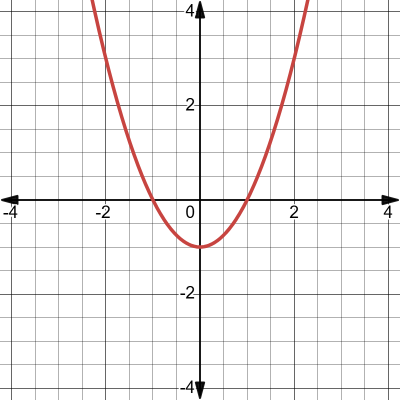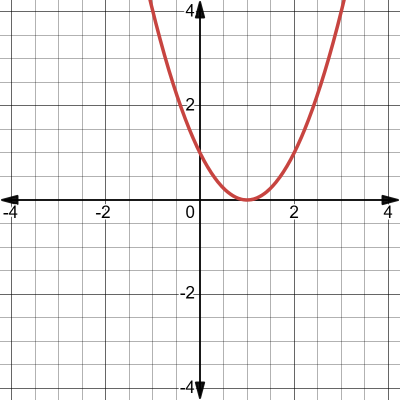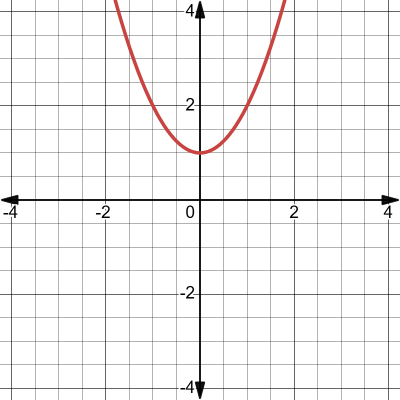4.1. Quadratic and cubic polynomials#
A polynomial of degree \(n\)
has \(n\) roots, which may be real or complex. Real roots may be distinct or repeated. Complex roots always come in conjugate pairs, \(a \pm bi\), where a is called the real part, \(\pm b\) is called the imaginary part, and \(i = \sqrt{-1}\) is the imaginary unit.
4.1.1. Quadratic polynomials#
Quadratic polynomials can have three types of roots:
Two real roots
One (repeated) root
Two complex roots
Graphically, two real roots occur as two intersections of a parabola with the y-axis. For example, the roots of \(x^2 - 1 = 0\) occur at \(x = \pm 1\):

One repeated root occurs as a single point of a parabola (its minimum or maximum) touching the y-axis. For example, the root of \((x-1)^2 = 0\) occurs at \(x = 1\):

Complex roots do not appear as intersections on a graph. For example, the roots of \(x^2 + 1 = 0\) are \(x = \pm i\):

Example: Complex roots
Find the roots of
I will use the technique of completing the square:
4.1.2. Cubic (and higher) polynomials#
General formulas for roots of cubic and quartic polynomials are known but complicated. No such formula exists for higher-order polynomials. In these cases, numerical methods are needed!